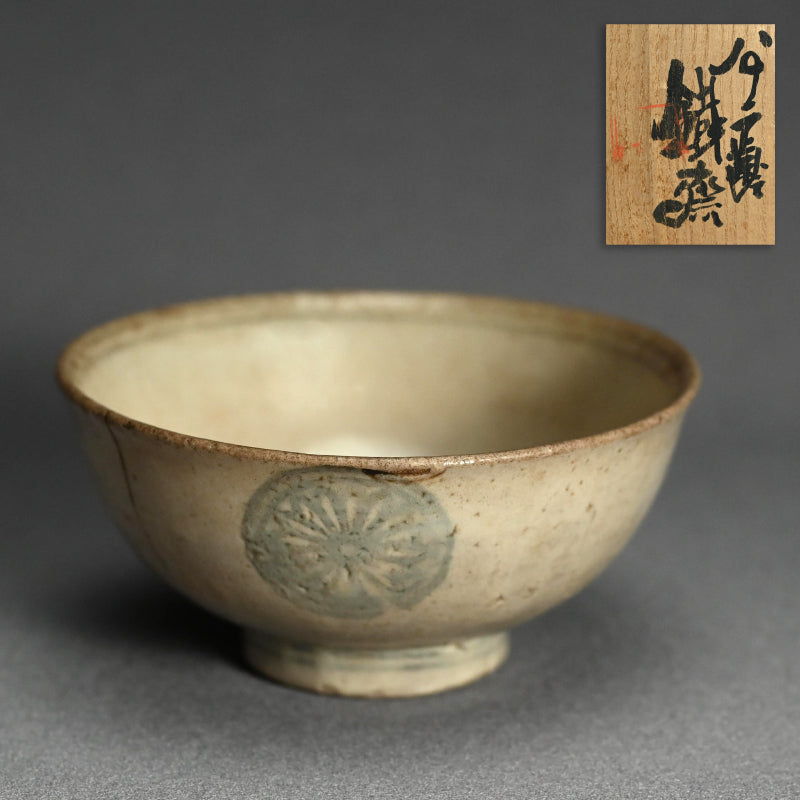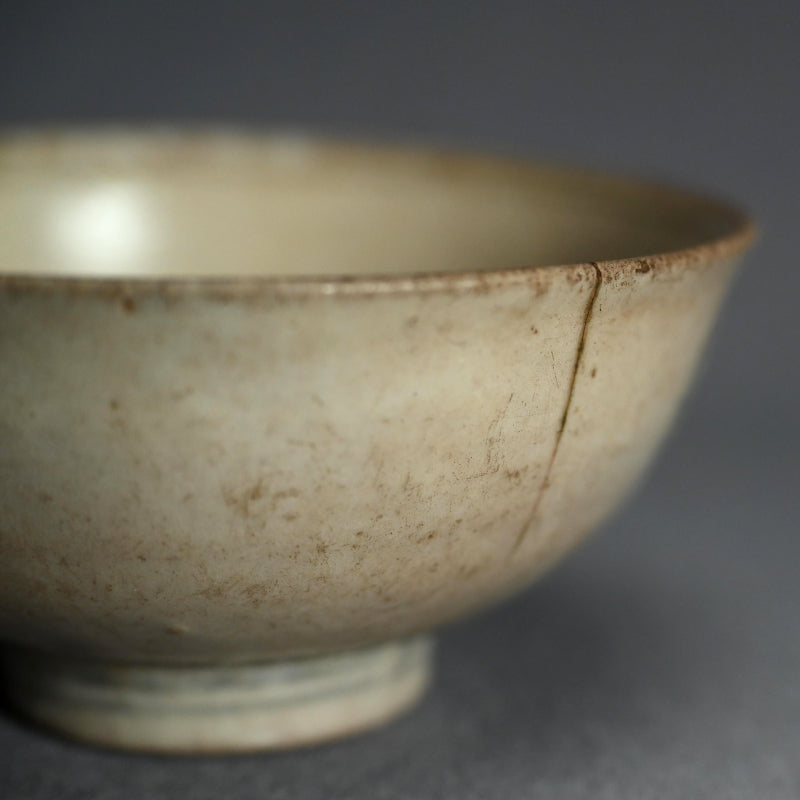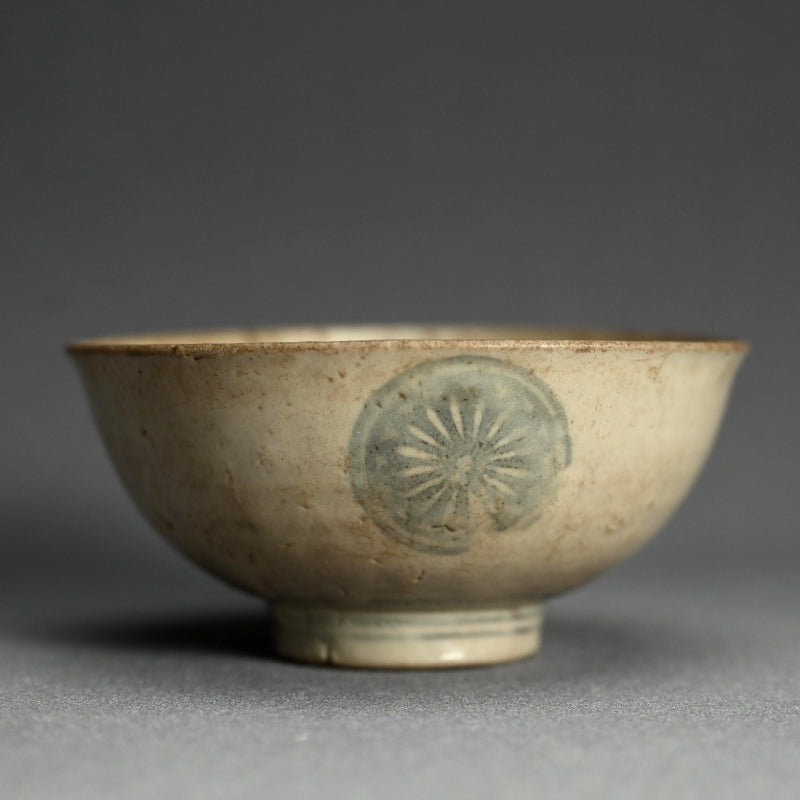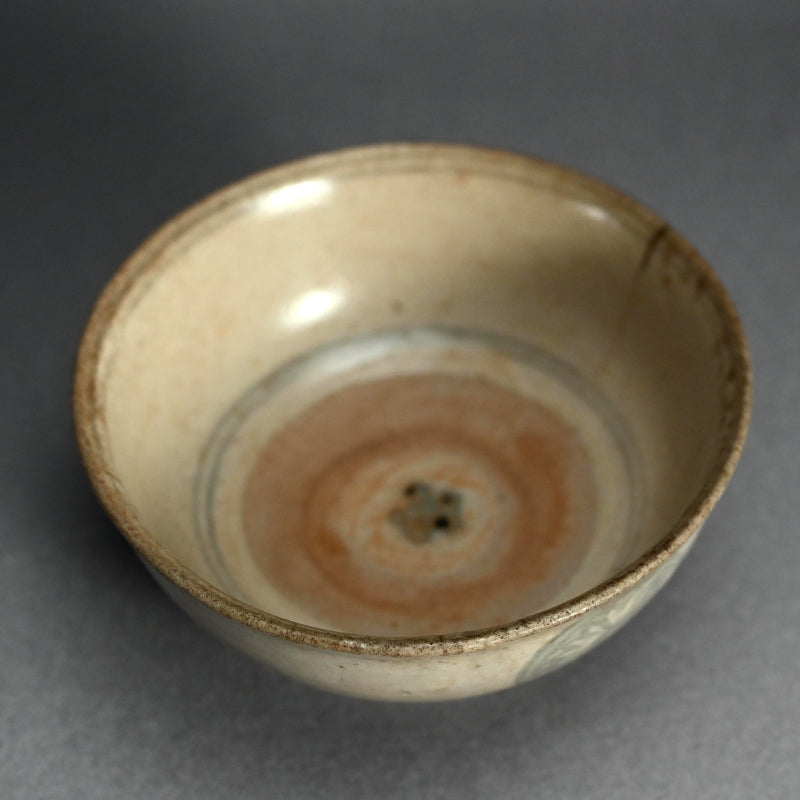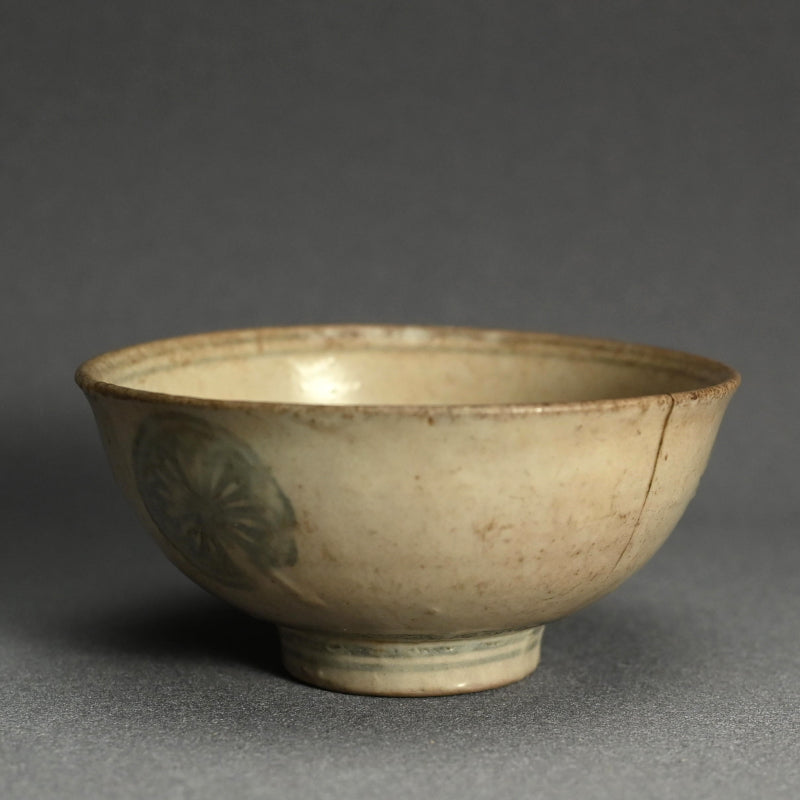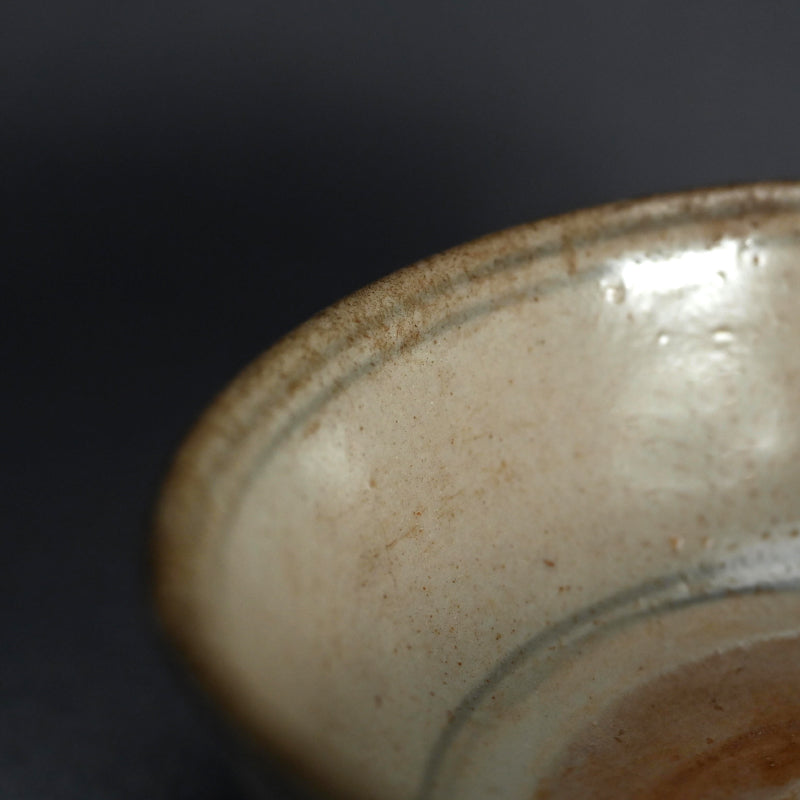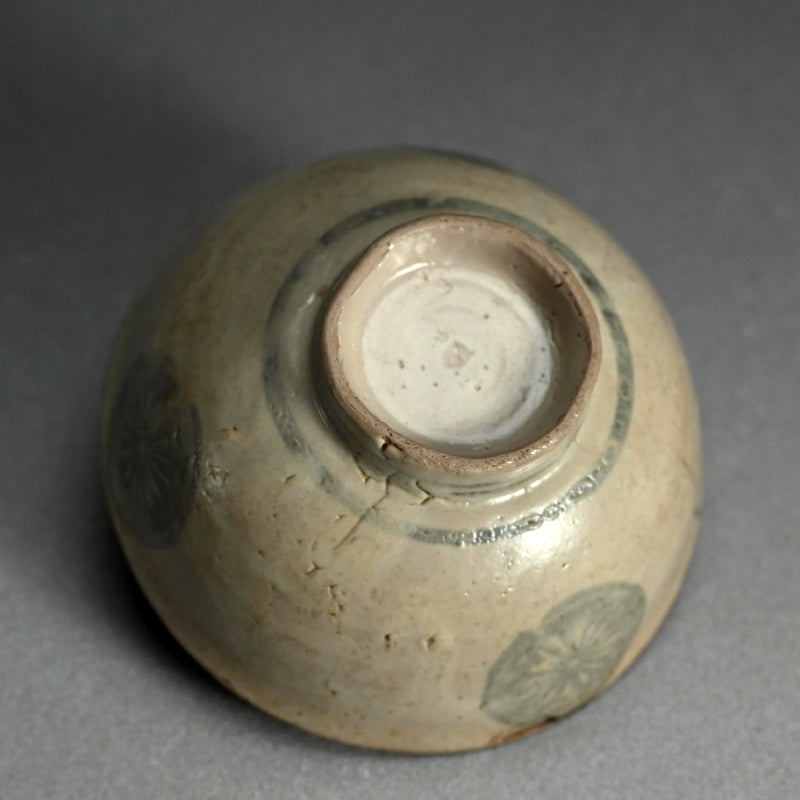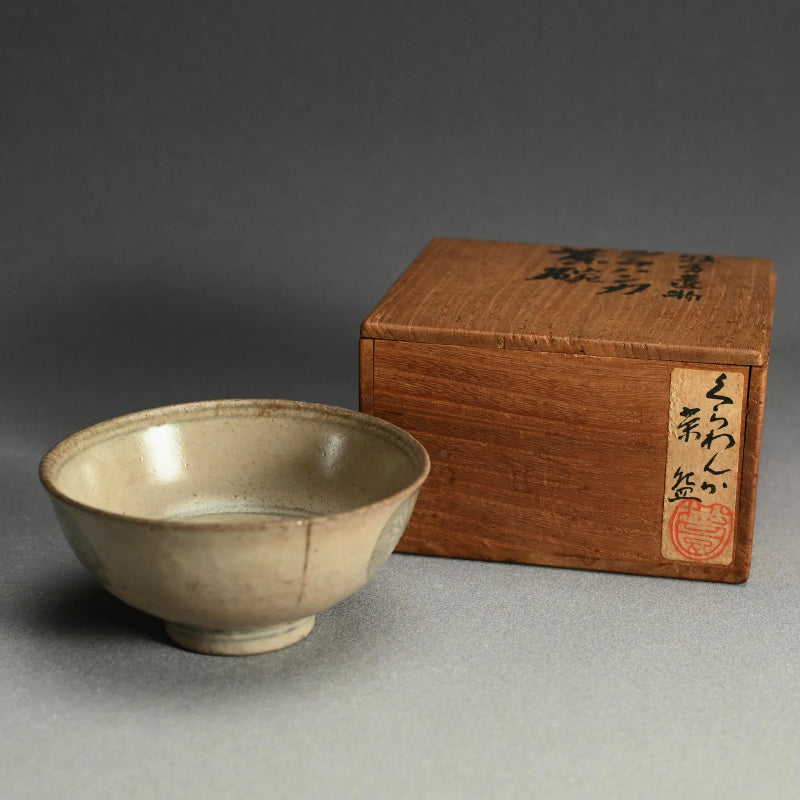Kurawanka Bowl formerly owned ー富岡 鉄斎 “牧方遺物 クラハンカ茶碗”
Kurawanka Bowl formerly owned ー富岡 鉄斎 “牧方遺物 クラハンカ茶碗”
Item Code: K862
Couldn't load pickup availability
An Edo period ceramic bowl from the collection of the great literati artist Tomioka Tessai enclosed in a wooden box signed and titled by him Hirakata Ibutsu Kurawanka Chawan (Kurawanka bowl from Hirakata). It is heavy on bottom as would be expected, measuring 12.5 cm (5 inches) diameter, and 6 cm (2-1/4 inches) tall.
The name derives from its use on the kurawanka-bune—boating food vendors on the Yodogawa River that sold side dishes and other items during the Edo period. The term kurawanka is a dialectal expression meaning “Won’t you eat?” Characteristically thick and low-centered to prevent tipping even on rocking boats, these bowls were sometimes thrown into the river by customers seeking to avoid paying for their meals after eating on board. In the past, kurawanka bowls were not only used for serving rice, but also for soups and even for drinking sake. As representatives of leisure times they were highly sought by collectors from the later 19th century on.
Tomioka Tessai (1837-1924) was a scholar artist trained from age seven in the traditional Confucian manner. After the death of his father he was apprenticed to a Shinto shrine, and later was forced to escape the capitol to Kyushu to avoid arrest for anti-governmental actions he had taken on part of the Imperial cause. Here he began serious study of Literati painting and furthered his scholarly research. Upon returning to Kyoto he was befriended by and moved to work under Otagaki Rengetsu, from whom he was heavily influenced. He helped to establish the Nihon Nanga-In and held a number of important positions, culminating in being appointed the official painter of the Emperor and a member of the Imperial Art Academy; the highest honor in Japanese Art circles. He is represented in innumerable important collections. Information on this important person is readily available, for more see Scholar Painters of Japan by Cahill (1972), Roberts Dictionary, or a quick internet search will find plenty of reading. He is held in the Tokyo National Museum, Museum of Fine Arts, Boston, Kyoto, V&A etc
Share
